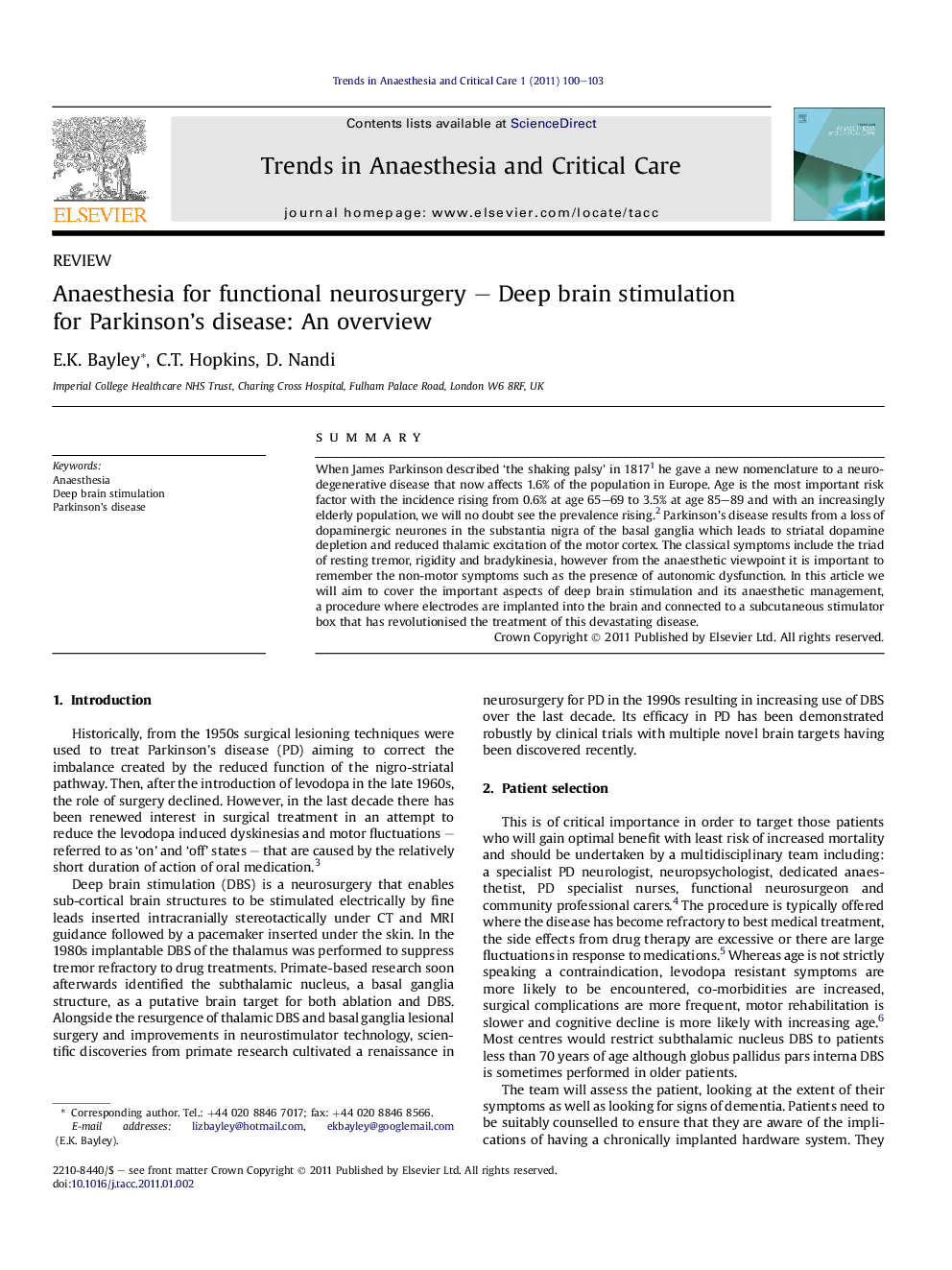| Article ID | Journal | Published Year | Pages | File Type |
|---|---|---|---|---|
| 2772861 | Trends in Anaesthesia and Critical Care | 2011 | 4 Pages |
SummaryWhen James Parkinson described ‘the shaking palsy’ in 18171 he gave a new nomenclature to a neurodegenerative disease that now affects 1.6% of the population in Europe. Age is the most important risk factor with the incidence rising from 0.6% at age 65–69 to 3.5% at age 85–89 and with an increasingly elderly population, we will no doubt see the prevalence rising.2 Parkinson’s disease results from a loss of dopaminergic neurones in the substantia nigra of the basal ganglia which leads to striatal dopamine depletion and reduced thalamic excitation of the motor cortex. The classical symptoms include the triad of resting tremor, rigidity and bradykinesia, however from the anaesthetic viewpoint it is important to remember the non-motor symptoms such as the presence of autonomic dysfunction. In this article we will aim to cover the important aspects of deep brain stimulation and its anaesthetic management, a procedure where electrodes are implanted into the brain and connected to a subcutaneous stimulator box that has revolutionised the treatment of this devastating disease.
